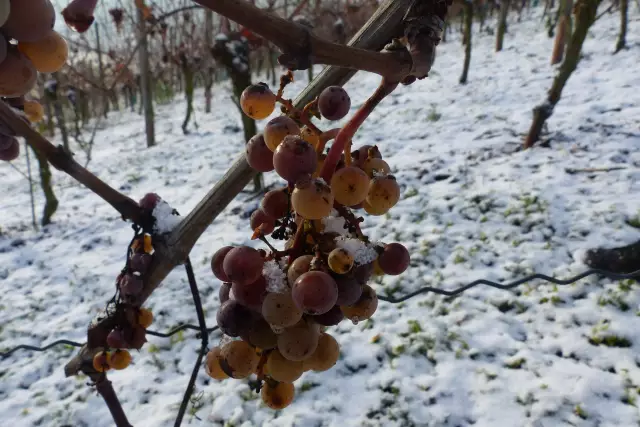Successfull Icewine harvest in Germany
On the morning of December 28, 2024, wineries in Franken, Germany, were able to harvest icewine grapes at below minus seven degrees Celsius as required by Federal law.

Winemaker Sebastian Koch from Binsfeld in Lower Franken achieved this in the early hours of the morning at the 'Stettener Stein' vineyard. The Melber winery in Rödelsee was also able to harvest frozen grapes. Winzerhof Krauß from Abtswind in the district of Kitzingen had already achieved this in November.
Rhineland-Pfalz: More wineries in starting blocks for icewine harvest
This year, 50 wineries in Rhineland-Pfalz have registered vineyards for the ice wine harvest. That is ten more than last year and a total of 42 hectares instead of the previous 32 hectares.
Minus seven degree Celsius required by law
For an icewine harvest, the grapes must be frozen through. This requires at least minus seven degrees for several hours. The overripe grapes are harvested frozen and pressed
Noble sweet specialty in demand internationally
The secret of icewines lies in the dense concentration of ingredients from grapes. In the frosty temperatures, the water in the berries freezes and remains in the wine press. The juice however drips from the press as sweet as honey. Musts with such a high sugar content can only be fermented into wine with great difficulty by the yeasts. '
Accordingly, ice wines generally have a very high natural residual sugar content of well over 100 grams per liter, but in contrast to southern sweet wines, only have a relatively low alcohol content - often only around seven percent by volume.
Great international recognition
Another special feature of these fine wines is that this enormous residual sweetness is not overpowering thanks to the fresh fruit acidity. As a rarity and specialty, German ice wines also enjoy great international recognition.
Additional information
Contact persons
-
Frank Schulz
Head of communication department


